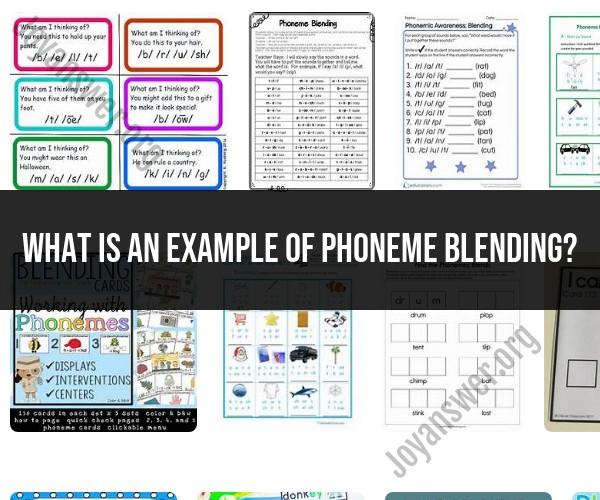What is an example of phoneme blending?
Phoneme blending is a crucial skill in the early stages of learning to read. It involves taking individual phonemes (the smallest units of sound in a language) and blending them together to form a word. Here's an example of phoneme blending:
Let's take the word "cat" as an example, which consists of three phonemes:
- /k/ (the first sound)
- /a/ (the middle sound or vowel sound)
- /t/ (the last sound)
To blend these phonemes together to form the word "cat," a child or beginning reader would:
- Begin by isolating the first phoneme, /k/.
- Then, move to the middle sound, /a/.
- Finally, blend in the last sound, /t/.
When done correctly, the child or reader would say "cat."
Phoneme blending is a fundamental skill that helps children and beginning readers decode words and develop their reading abilities. It is a step towards recognizing and pronouncing words as a whole, rather than just individual sounds or letters.
Can you provide an example of phoneme blending in reading?
One example of phoneme blending in reading is the word "cat." When a child blends the phonemes in this word, they hear the sounds /k/, /a/, and /t/. They then put these sounds together to say the word "cat."
How does phoneme blending help in decoding words?
Phoneme blending helps in decoding words by allowing children to sound out words that they are unfamiliar with. For example, if a child is unfamiliar with the word "dog," they can blend the phonemes /d/, /o/, and /g/ to say the word "dog."
What are some phoneme blending exercises for improving reading skills?
Here are some phoneme blending exercises that can help to improve reading skills:
- Say words slowly and stretch out the individual sounds. This will help children to hear the different phonemes in a word.
- Play games and sing songs that involve blending phonemes. There are many resources available online and in libraries that can help with this.
- Have children blend phonemes together to make words. This can be done using flashcards, magnetic letters, or other materials.
- Encourage children to sound out words when they are reading. This will help them to decode unfamiliar words and improve their reading comprehension.
What role does phonemic awareness play in early literacy?
Phonemic awareness is the ability to hear and manipulate the individual sounds in words. It is a foundational skill for reading and writing. Children who have strong phonemic awareness skills are better able to learn letter-sound relationships and decode words.
How can parents and educators support children in mastering phoneme blending?
Parents and educators can support children in mastering phoneme blending by:
- Talking to children about the sounds in words. This can be done by pointing out the different sounds in words that you are saying or reading.
- Playing games and singing songs that involve blending phonemes. There are many resources available online and in libraries that can help with this.
- Providing children with opportunities to blend phonemes together to make words. This can be done using flashcards, magnetic letters, or other materials.
- Encouraging children to sound out words when they are reading. This will help them to decode unfamiliar words and improve their reading comprehension.
Here are some additional tips for supporting children in mastering phoneme blending:
- Make learning fun and engaging. Children are more likely to learn and retain information if they are enjoying themselves.
- Be patient and supportive. Learning to blend phonemes takes time and practice.
- Provide children with plenty of opportunities to practice. The more they practice, the better they will become at blending phonemes.
If you are concerned about your child's phoneme blending skills, talk to their teacher or a reading specialist. They can provide you with additional support and resources.


